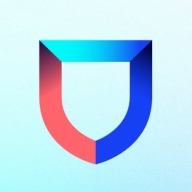


Lacework FortiCNAPP and Microsoft Defender Vulnerability Management compete in the field of cybersecurity solutions, focusing on vulnerability management. Lacework FortiCNAPP has an upper hand in cloud integrations and ease of use, while Microsoft Defender excels in comprehensive vulnerability management and integration with the Microsoft ecosystem.
Features: Lacework FortiCNAPP is noted for its anomaly detection, compliance reporting, and seamless data ingestion, which aid in identifying critical vulnerabilities and automating monitoring. Microsoft Defender offers robust vulnerability assessments, detailed CVE information, and is well-integrated within the Microsoft ecosystem, providing a business-centric scorecard for security management.
Room for Improvement: Lacework FortiCNAPP users highlight issues with visibility, IAM controls, and integration with SIEMs and third-party tools, along with a need for improved alert configuration and data governance. Microsoft Defender could improve by reducing false positives, enhancing Linux management, and simplifying report customization, along with addressing pricing complexity and portal refresh rates.
Ease of Deployment and Customer Service: Lacework FortiCNAPP supports a wide range of cloud environments and is backed by proactive and quick technical support. In contrast, Microsoft Defender operates effectively in diverse, including hybrid environments, but receives mixed feedback on support engagement levels.
Pricing and ROI: Lacework FortiCNAPP is moderately priced with negotiation opportunities and offers visible ROI through operational efficiency. In comparison, Microsoft Defender provides economical pricing within its bundle but suffers from a complex licensing model. Though economically advantageous within the Microsoft ecosystem, users find Lacework beneficial for reducing manual monitoring and resource allocation.
| Product | Market Share (%) |
|---|---|
| Microsoft Defender Vulnerability Management | 2.7% |
| Zafran Security | 1.0% |
| Lacework FortiCNAPP | 1.3% |
| Other | 95.0% |



| Company Size | Count |
|---|---|
| Small Business | 4 |
| Midsize Enterprise | 4 |
| Large Enterprise | 3 |
| Company Size | Count |
|---|---|
| Small Business | 9 |
| Midsize Enterprise | 2 |
| Large Enterprise | 5 |
Zafran Security integrates with existing security tools to identify and mitigate vulnerabilities effectively, proving that most critical vulnerabilities are not exploitable, optimizing threat management.
Zafran Security introduces an innovative operating model for managing security threats and vulnerabilities. By leveraging the threat exposure management platform, it pinpoints and prioritizes exploitable vulnerabilities, reducing risk through immediate remediation. This platform enhances your hybrid cloud security by normalizing vulnerability signals and integrating specific IT context data, such as CVE runtime presence and internet asset reachability, into its analysis. No longer reliant on patch windows, Zafran Security allows you to manage risks actively.
What are the key features of Zafran Security?
What benefits can users expect from Zafran Security?
In industries where security is paramount, such as finance and healthcare, Zafran Security provides invaluable protection by ensuring that only exploitable vulnerabilities are addressed. It allows entities to maintain robust security measures while allocating resources efficiently, fitting seamlessly into existing security strategies.
Lacework FortiCNAPP provides robust cloud security, combining vulnerability management and multi-cloud insight with user-friendly controls, machine learning detection, and compliance support.
Lacework FortiCNAPP specializes in cloud security by merging machine learning anomaly detection with agent-based vulnerability management to offer detailed alerts and compliance reports. Its comprehensive approach allows continuous monitoring across AWS and Kubernetes, providing insights from an attacker's perspective. The platform offers automation and seamless Slack integration, facilitating collaborative and efficient cloud security management. Users value its ability to handle multi-cloud environments and scan IAC scripts, configurations, and compute nodes across AWS and GCP.
What are the key features?Organizations across sectors leverage Lacework FortiCNAPP for cloud security, focusing on compliance, security posture, and vulnerability management. It is widely used for monitoring AWS and Kubernetes environments, scanning IAC scripts, configurations, and securing compute nodes. It supports multi-cloud security posture management and log ingestion, enabling companies to maintain strong cloud infrastructures without dedicated security layers.
Microsoft Defender Vulnerability Management enables organizations to identify vulnerabilities, manage patches, and fortify threat detection. It offers endpoint assessments, cloud incident management, and dynamic security through Microsoft's Security Scorecard integration.
Organizations leverage Microsoft Defender Vulnerability Management for advanced threat detection and response. It provides robust tools for vulnerability assessment and cloud incident management, integrated with Microsoft's Security Scorecard to enhance dynamic security profiling. Key features include automatic patch deployment, security configuration management, and seamless integration with Microsoft platforms, benefiting both on-prem and cloud environments. Organizations can track vulnerabilities with severity-based reports, helping manage outdated software and minimizing threat exposure.
What are the key features of Microsoft Defender Vulnerability Management?In healthcare, Microsoft Defender Vulnerability Management helps manage compliance with health regulations, while in finance, it aids in securing sensitive data from cyber threats. Manufacturing sectors benefit from its patch management, keeping operational technology systems less vulnerable to disruptions.
We monitor all Vulnerability Management reviews to prevent fraudulent reviews and keep review quality high. We do not post reviews by company employees or direct competitors. We validate each review for authenticity via cross-reference with LinkedIn, and personal follow-up with the reviewer when necessary.